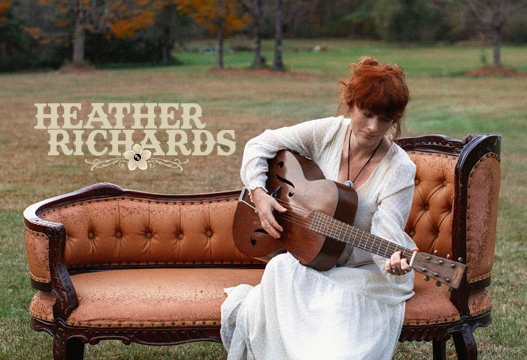Jeff and Crystal Moore – Peak Music Studios – An Xperience Interview
Written by Staff on April 14, 2024
Jeff and Crystal Moore – Peak Music Studios – An Xperience Interview – by Liam Sweeny.
RRX: So let me go ahead and ask you the first question I got. I am going to come right out and say it. What is the number one question people ask you about singing? And then after that, what’s the number two question?
JM: Well, the number one question is usually, “Do I have talent?” And that’s a very interesting question. And the number two question is, “Can I extend my range?” And both of those questions were what led us to write the book. There’s so much misunderstood by asking those questions. “Do I have talent?” when it’s like, “Can I learn to walk?” And it’s like, “Do I have the talent to walk?” Yes, you do. We just need to show you how to do that. It seemed like a natural follow-up from there.
RRX: Speaking of talent, since we’re talking about that, do you think people overestimate their potential for talent, or do you think people underestimate that?
JM: It’s about 98%, 99% way underestimate talent. “Talent” are metrics that allow you to sing, which are rhythm, timing, pitch. A lot of memory. People think that they are (and they use the word) terrible. I rate it on a scale so it’s easier to talk about. But … most people are just very concerned that their singing is not good enough. And that’s one of the nice things about being able to give people a path forward that want to present their voice. It’s really not that difficult. There’s just so much misinformation and so much emotion tied up in the voice that makes it difficult for people to get out and sing. Now, I’m discounting the drunk karaoke, karaoke people out there. That, that’s, that’s a little bit different. “I’m gonna take eight shots of tequila and then I’m gonna sing a song.” That’s different than “I wanna improve my voice and sing in front of a group of people.”
RRX: Ok. All right. Yeah, that makes sense. And so, you’re saying a vast majority of people have an underreading of their own potential for talent? If I could follow up on that, so as far as the talent goes, do you think that starts with an affinity? Like … however you do this … does it start with an affinity for actually singing with your voice, or is the talent something more inside? Like more of a conceptual part of a person?
JM: Well, that, that’s an interesting and insightful question, because that’s what it is. If someone really says to themselves, “I want to sing and present my voice and find a path to do that,” we can deal with just about anyone. I have, you know, two students who have Down Syndrome, I have one student that has a serious speech impediment, and all of them are moving forward towards performance at different levels. But it is the decision that they want to do that. And that’s what we found (to be) the differentiating factor. If someone is so afraid that they can’t make a decision and say, “I want to sing,” then there’s very little information that I can get them to do that. So it really is an internal thing. And once you get that fire going— “I want to perform. I want to sing.” There’s, you know, you really can’t stop them once you get that fire going in a person, right?
RRX: Now you had mentioned having some students with Down Syndrome. I had read at the beginning of what Crystal had sent me, that you started this journey of your own … from having a speech impairment. Let me give you a second to talk about that because that’s pretty important for someone to understand that about you, as they’re reading through the book, I think.
JM: Yes … I was diagnosed with that … early on in elementary school. They picked that up. I had difficulty speaking and making certain sounds. And, um, one thing I noticed as a kid was, I didn’t have a problem when I was singing, and I was enormously embarrassed that I had this speech impediment. So, it made me, it drove me to … sing. So that when I was singing, I didn’t have the same issues as when I was speaking. And to understand as much about my voice as I could, and to avoid feeling that way, because I felt like an … outsider. I felt like I was an insider when I was singing, and when I was just speaking to someone, I felt like an outsider. So it really drove me to try to understand myself. And later on, (I never thought I would be dealing with students,) but it really helps me have a point of connection because I know what it feels like to be embarrassed. I know what it feels like to not feel like you’re good enough to perform, and all of those things. I’m really happy that I was able to collaborate with Crystal on this because it feels like we’re offering something to the public that’s really worthwhile. Absolutely. Absolutely.
RRX: What is your “head voice?” And what is your “chest voice?” And can you, in fact, say it with your chest?
JM: Ok. So the chest voice is basically your speaking voice. That is the range that you use on a day-to-day basis. Speaking, it is the TA muscle group that is responsible for most of that. The CT muscle group is responsible for the head voice and that is the stretching and thinning out of the vocal folds. And that is a higher-pitched voice. And between those two things, as you’re moving up, you get to where your break is, which is kind of the transition between the two muscle groups. And that’s why you get that weird behavior—voice flips and those types of things. They call it “head voice” because it kind of feels like it resonates in your head, and “chest voice” because it resonates in your chest. But it’s basically just two different muscle groups, and whether it’s pushing your vocal folds together and shortening them, or stretching them out.
RRX: I have one more question here and then I’ll leave the last two for Crystal. Alright … I’m gonna do a hardcore show tomorrow. I scream. What can I do the day before and the day after to protect my voice?
JM: All right. So the biggest thing that you’re gonna do if you’re doing screaming and heavy grit with your voice, is you actually practice a growling technique where your vocal folds are not grinding together. What you want to use is … your false vocal folds (which is basically the loose tissue around your vocal folds). And that will vibrate, and that vibration produces the same effect as if you were grinding your vocal folds and causing all sorts of health issues. So drink a lot of water, learn the right method for screaming and growling, and you can carry on a two-hour show without any problems.
CM: And… if folks would just check us out on Amazon, that would be great. That really helps bump us up in the algorithm, but we also have an author’s website. So it’s just www.yoursingingquestionsanswered.com.





 RadioRadioX
RadioRadioX